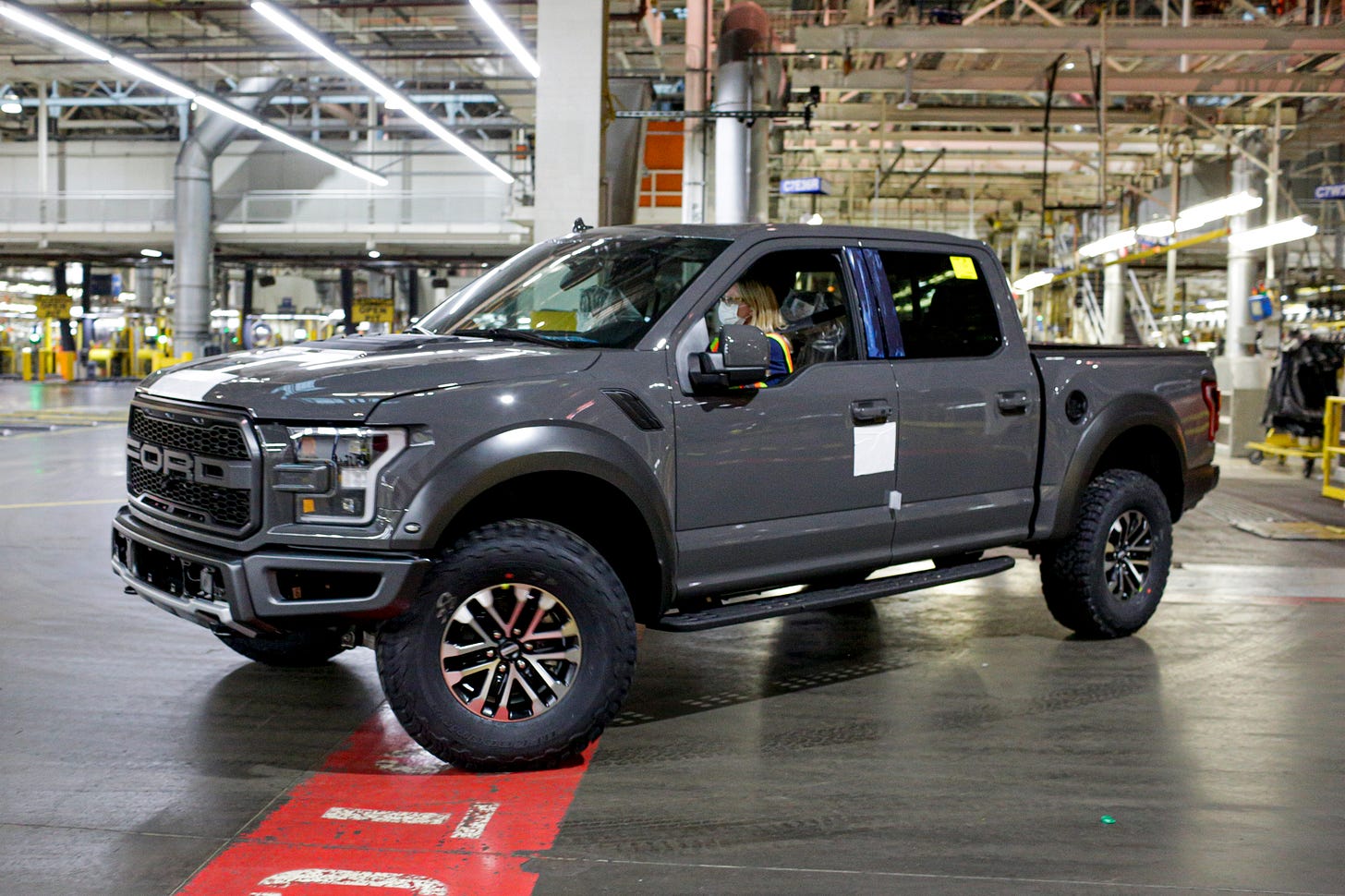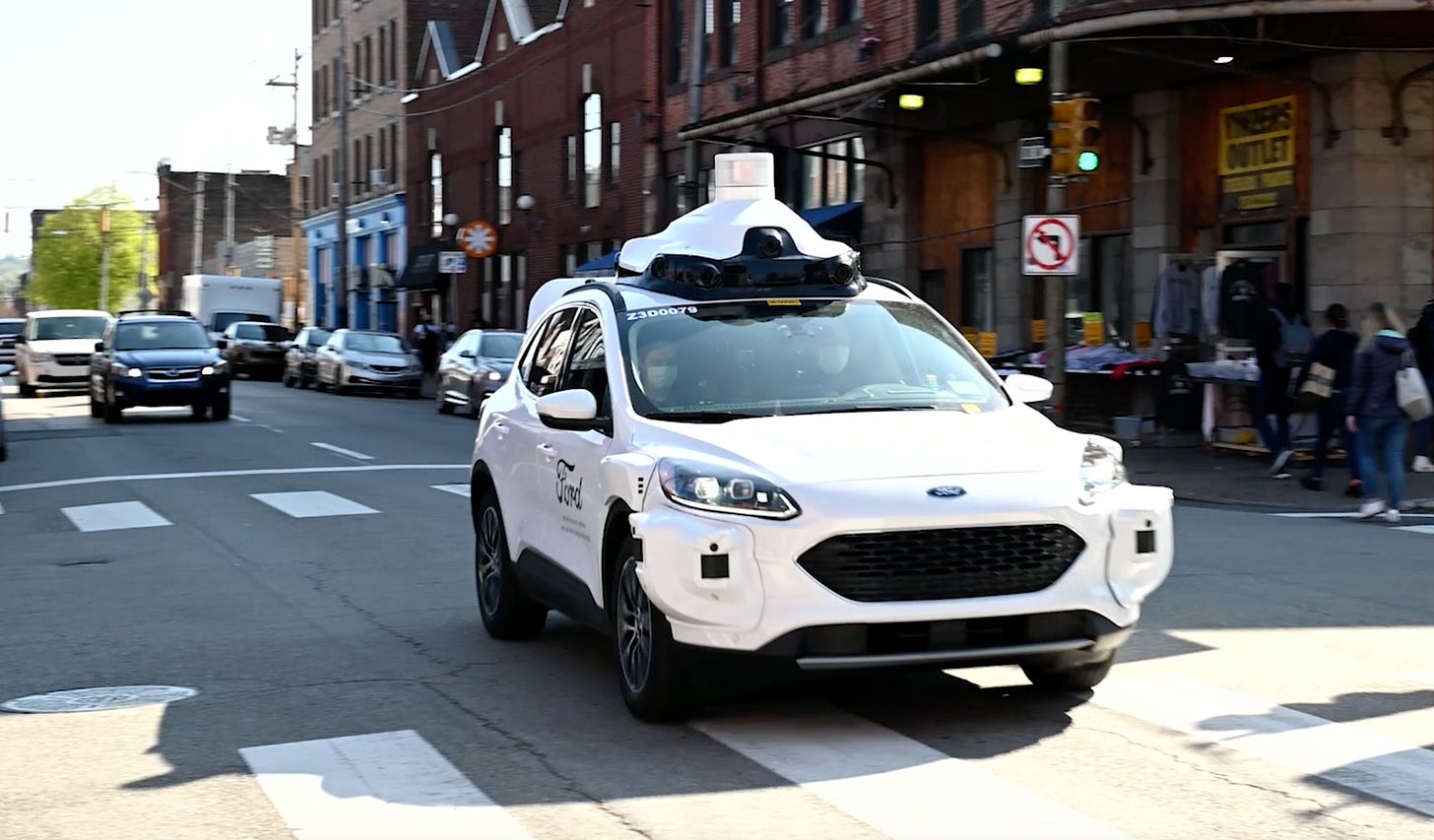The Torquest - Your Daily Auto Fix
Automotive news curated from the world of legacy automakers, electric vehicle startups, suppliers and everything in between and beyond.
May 4, 2021. Issue #24
May The Fourth Be With You. In this #issue: *Semiconductor chip shortage hurting Ford most* Tesla asked to show documents related to CEO compensation plan* Ferrari shares hit the brakes on Tuesday after co delays financial targets* Arrival, Uber in EV tie-up* Argo claims to have a better Lidar sensor*
1. Why Thousand’s of Ford’s Best-selling Pickups Are Piling Up Along I-71?
Thousands of Ford Motor Co’s best selling F-series pickup trucks are gathering dust near its Kentucky Truck Plant in Louisville along I-71 waiting for parts because the automaker -reeling under an acute semiconductor chip shortage -is building them without key modules, according to a Detroit Free Press report.
The Dearborn, Michigan-based company had last week told analysts it grew inventory by $2.2 billion in the first-quarter and it had about 22,000 vehicles parked at the end of March and waiting for installation of chip related components.
Those numbers for America’s best-selling trucks that are built but stay parked have most likely risen and an indication of the multibillion-dollar impact of the ongoing global semiconductor shortage on the auto industry, specifically Ford.
Photo: Ford.com; May 18, 2020
According to the report citing AutoForecast Solutions, the semiconductor chip shortage is hitting Ford's operations the hardest globally in terms of actual vehicles taken out of the production schedule.
The lost vehicle production so far this this year has been estimated to be:
Ford, 362,663 fewer vehicles
General Motors, 326,651
Renault Nissan Mitsubishi, 284,948
Volkswagen, 207,521
Stellantis, 202,486
Toyota, 113,555
Honda, 82,482
Ford has already said it expects to lose about 50% of its planned second quarter production and warned that the chip shortage may not be fully resolved until 2022. The automaker expects to 1.1 million units of lost production in 2021.
2. Tesla Asked To Provide Documents Involving Musk’s $55 Bln Compensation Plan
A Delaware judge has ordered Tesla Inc lawyers to hand over communication documents before the company board approved a compensation plan in 2018 for CEO Elon Musk, Associated Press reported on Monday.
The ruling by Vice Chancellor Joseph Slights Jr. was in response to a motion filed by shareholders who had, in 2018, sued Tesla accusing the electric vehicle maker of granting unjust enrichment to Musk and wasting corporate assets.
Musk, who does not draw a salary from Tesla, could mint billions if Tesla stock hits ambitious market capitalization and operational milestones.
Musk adds stock equal to 1% of outstanding TSLA shares every time certain milestones are hit. There are a total of 12 such tranches outlined in the Tesla CEO's pay package, six of which have already been unlocked. Musk already owned 20% of Tesla when the plan was approved in 2018.
According to the plan, Musk will receive the full benefit of the pay plan, $55.8 billion, only if he leads Tesla to a market capitalization of $650 billion within a decade and hit revenue and earnings targets.
3. Ferrari Postpones 2022 Financial Targets, Continues CEO Hunt
Italian sports carmaker Ferrari NV won’t be hitting its 2022 financial targets due to the coronavirus pandemic and despite a strong orderbook in the first quarter of 2021.
The Maranello, Italy-based company, which has been without a permanent leader for nearly five months, said it now plans to achieve the targets a year later sending its shares down as much as 6.8% in Milan, their biggest drop in more than a year, according to Bloomberg News.
Ferrari, which is planning to unveil its first EV model in 2025, is scouting for a new chief executive officer after Louis Camilleri’s surprise resignation in December.
The new CEO will have to embrace a company that has been so far reluctant to abandon the internal combustion engine.
Shipments totaled 2,771 units, up 33 units or 1.2% from a year ago with China, HK and Taiwan numbers rising five-folds to 194 units.
4. Will Arrival’s Uber Tie-up To Make EVs Specifically For Ride-Hailing Work?
Electric vehicle maker Arrival Group SA and Uber Technologies Inc are working together to develop an affordable electric vehicle purpose-built for ride-hailing services and slated to go into production in 2023, Reuters reported on Tuesday.
The United Kingdom-based startup’s tie-up with Uber is not exclusive and the two companies plan to explore a strategic relationship in the United Kingdom, European Union and the United States.
Arrival secured its biggest public order for up to 10,000 vans from United Parcel Service Inc last year, which also owns a stake in Arrival.
The startup is however like many other electric vehicle SPACs is yet to prove it can actually sell production vehicles profitably.
The company has already built a few prototype vans but is yet to begin testing them on public roads. Arrival expects to start production of its electric buses by the fourth quarter of 2021, and electric vans are slated to launch in the second quarter of 2022.
The EV startup claims it is able to keep costs low and competitive thanks to its vertical integration business model that relies on in-house components, materials and software.
5. Argo Sees New Sensor Vital to Self-Driving Cars
Ford Motor Co and Volkswagen Ag-backed self-driving startup Argo AI has developed a Lidar sensor that it claims could be key to commercializing autonomous transportation, according to Bloomberg News report.
The Pittsburgh-based company plans to equip Ford and Volkswagen autonomous vehicles with the new Lidar sensor in the middle of the decade which it claims has the capability to see four football fields down the road.
https://www.argo.ai/wp-content/uploads/2021/05/ArgoAI_BRoll_Stringout_210503.mp4
The success of self-driving technology sits on the capabilities of Lidar sensor. The technology creates an image of the road ahead after bouncing light off objects and delivers critical information to computers for self driving vehicles.
Argo is testing its technology in six U.S. cities with vehicles that shuttle both cargo and passengers and is running multiple shifts in high-demand areas, like surface streets, and now also highways, the report said.






